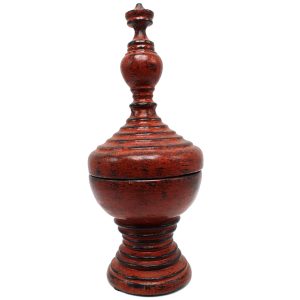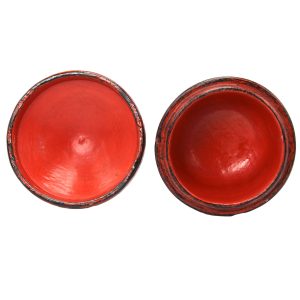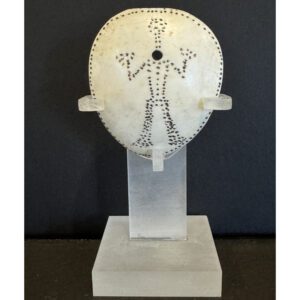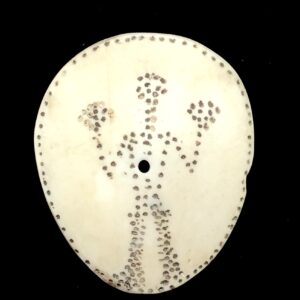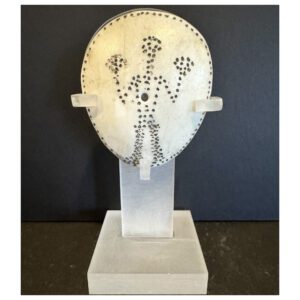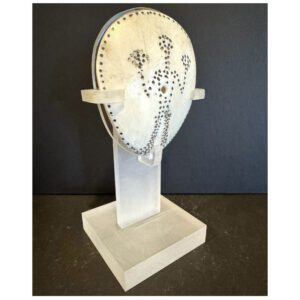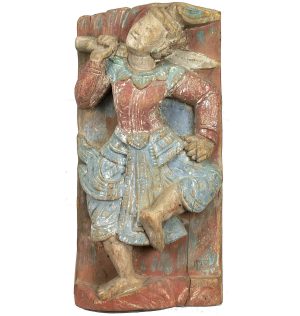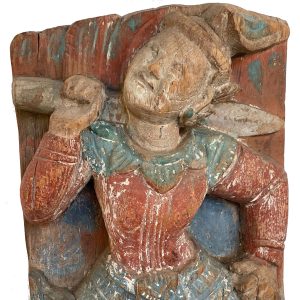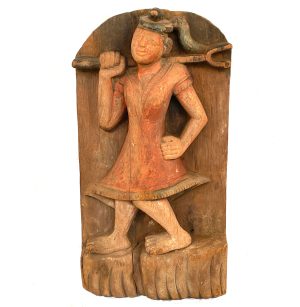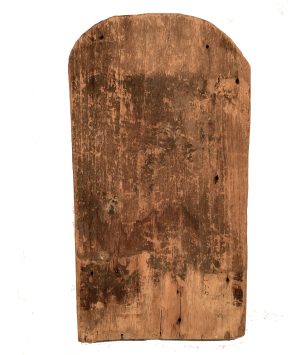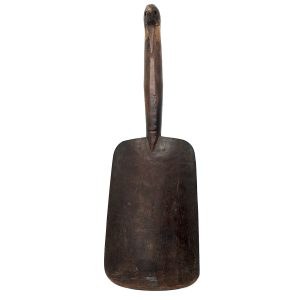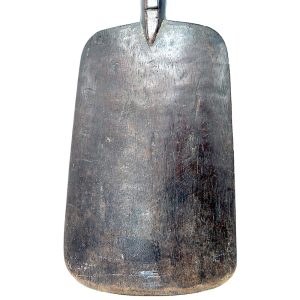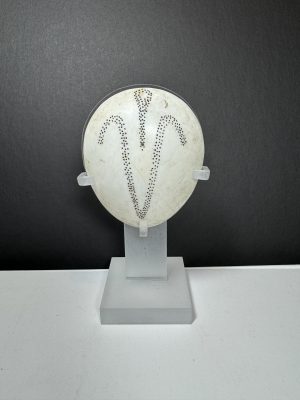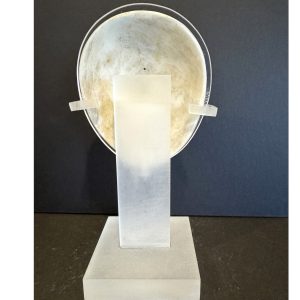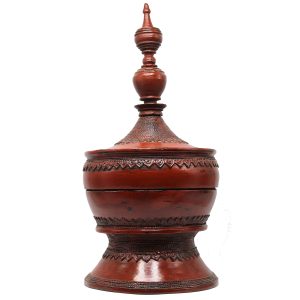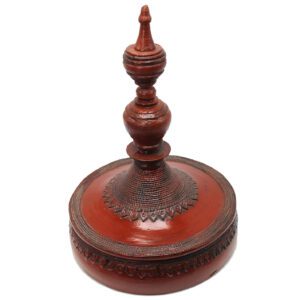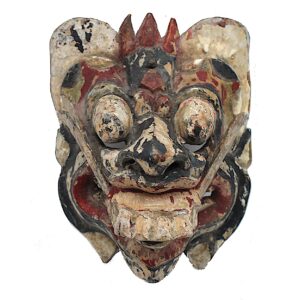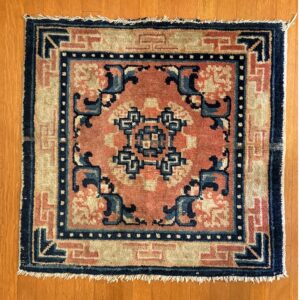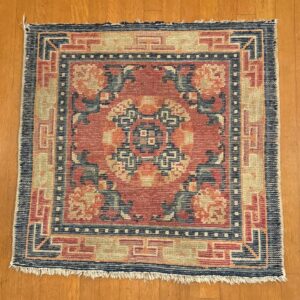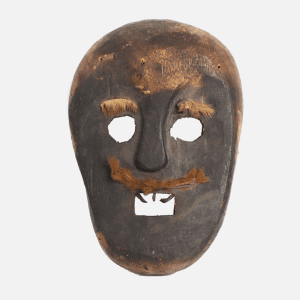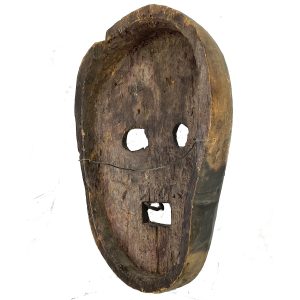Showing 409–420 of 430 results
-
Sale!


$185.00 Original price was: $185.00.$160.00Current price is: $160.00.
H: 10.5” Dia: 4.25″ | FREE SHIPPING WITHIN CONTINENTAL U.S.
Vintage miniature lacquer and bamboo hsun ok used on a home altar for offerings to the Buddha statue there with circular tiers repeated on the foot and the stupa finial top.
-
Sale!


$295.00 Original price was: $295.00.$260.00Current price is: $260.00.
H: 4.6″ W:2.5 ” D: 2.12 ” | FREE SHIPPING WITHIN CONTINENTAL U.S.
Made by the Naga, tribal ethnic groups in India, conch shell ear covers were worn by warriors attached to pierced ears through a hole in the shell. Stippled abstract images of standing male with raised arms as status sign, mounted on Lucite base and is a fascinating piece of cultural art.
-
Sale!


$295.00 Original price was: $295.00.$260.00Current price is: $260.00.
H: 4.6″ W:2.5 ” D: 2.12 ” | FREE SHIPPING WITHIN CONTINENTAL U.S.
Made by the Naga, tribal ethnic groups in India, shell ear covers like this with stippled abstract image of standing male with raised arms were worn by warriors as status symbols.
-


$335.00
Traditional Burmese dance has its roots in folk religion and is a combination of ancient animism, nat worship and a later syncretic blend with Buddhism. Ethnic minorities often perform dances that include warriors , Zawgyi (shaman) and nats wielding swords or holding drums while dressed in full-body costumes. Burmese performances were regulated with limitations on…
-
Sale!


$335.00 Original price was: $335.00.$250.00Current price is: $250.00.
H: 16.75″ W: 99.375″ D: 3″ | FREE SHIPPING WITHIN CONTINENTAL U.S.
This charming vintage folk-art panel of a barefoot female farmer with a woven rattan basket behind her with the handle over her forehead is part of a 3 part set of farmer images
-


$335.00
Burmese women always did strenuous work, yet they rarely see themselves as farmers. This is due to Burma’s old patriarchal culture, Burmese laws and narrow rural beliefs defining them as workers laboring for men only: their father, brother or husband. This wonderful painted wood panel of a barefoot female farmer depicts her with the long…
-


$115.00
This vintage Indonesian rice paddle/spoon was crafted from local wood by a Lombok craftsman and is a fine example of the cultural art of the Sasak people who number three million and comprise about 80% of its population. As animism farmers for two millennia, they lived in houses surrounding religious compounds where they held religious…
-
Sale!


$325.00 Original price was: $325.00.$285.00Current price is: $285.00.
H: 5.25″ W:3.75 ” D: 2 ” | FREE SHIPPING WITHIN CONTINENTAL U.S.
Made by the Naga, a collection of tribal groups in India with a past headhunting tradition, conch shell ear covers are worn by warriors. This has a stippled image of a buffalo’s neck and head inside V-shaped horns, a symbol of wealth, prosperity. On Lucite base, they are unique cultural art.
-
Sale!


$335.00 Original price was: $335.00.$275.00Current price is: $275.00.
H: 16.25 ” Dia: 8 ” | FREE SHIPPING WITHIN CONTINENTAL U.S.
Given its size this smaller early 20th century Hsun-ok with simple sophisticated designs of with parallel rows of intricate triangular and beaded borders may been placed as decorative piece on a home altar.
-
Sale!


$395.00 Original price was: $395.00.$315.00Current price is: $315.00.
H: 6.3″ W: 4.8″ D: 2.5″ | FREE SHIPPING WITHIN CONTINENTAL U.S.
Rare Rangda mask from Indonesia island of Lombok made by Balinese Hindu craftsman is a child’s toy or mask used to teach child dancers cultural and artistic traditions. Made to instill fear with fangs, bulging eyes and protruding teeth. Missing lower fang indicate it was “de-commissioned.”
-
Sale!


$375.00 Original price was: $375.00.$315.00Current price is: $315.00.
H: 26″ W: 26″ | FREE SHIPPING IN CONTINENTAL US
Made from wool and natural dyes this small vibrant vintage carpet square can be used for meditation, an accent piece or hung on a wall. The center has 4 stylized bats, the ultimate symbol of good luck, blessings, happiness and riches.
-
Sale!


$495.00 Original price was: $495.00.$325.00Current price is: $325.00.
H: 12.5″ W: 8.625″ D: 2.75″ | FREE SHIPPING WITHIN CONTINENTAL U.S.
Deeply set cut-out eyes and mouths are traditional for West Timor ancestor masks as are few, none or menacing teeth. They are rare and often have hair on animal hides on the upper lip, brows and head. Often looking threatening with stark features, their black color, teeth and often lack of balance scare off malevolent and evil spirits. Storing them in the rafters above the house hearth accounts for their smokey black color. Timor Ancestor masks have an earthy expressive presence and a raw spirit.
Timor’s religion has been described by Barbier as ritual exchanges between persons and social groups with their ancestors and fertility spirits. Timorese believe they can be upset by wicked forces, sickness, infertility and other forces, but particularly by the failure of the living to make suitable sacrifices to ancestral spirits. The departed protect and bring prosperity to the living as long as they are honored properly, so there is a close reciprocal link between the deceased and the secular world. Ancestors mediate between the living and the unseen world for living relatives. Their masks are used in animist veneration rituals, protective ceremonies and ritual dances or ceremonies tied to fertility, harvest, or funerary rites Besides masks, the living s are obliged to carve ancestor effigies to honor departed souls for them to occupy and rest in during their village visits. Many ceremonies usually occur in a house room known as “the womb” where a pillar supports beams rising up to the roof struts. This functions symbolically as an axis mundi (the center of the world or cosmic axis) that connects heaven and supports a simple altar above the floor to hold religious artifacts, protective fetishes and charms to ward off evil. So masks, effigies and fetish objects are protective and magic objects used throughout Indonesian islands in. Timor masks were rarely seen in the west until the mid-1970s.
End of content
End of content

